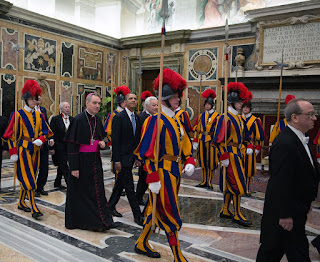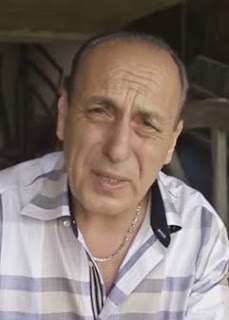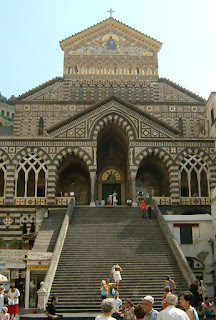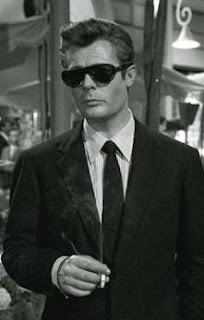Colourful uniforms camouflage highly trained security professionals
The Pope’s Swiss Guard was founded on this day in Vatican City in 1506.
 |
| A soldier from the Swiss Guard on duty in the Vatican |
The Swiss had been producing mercenary soldiers for hundreds of years with a reputation for loyalty and good discipline.
In the 15th century they were known for their good battle tactics and were employed by many European armies.
Pope Julius II ordered the first Swiss troops to guard the Vatican and they arrived in Rome on 22 January, 1506, the official date now given for the foundation of the Papal Swiss Guard.
The Pope later gave them the title ‘Defenders of the Church’s freedom’.
Recruits to the Pope’s Swiss Guard unit have to be Catholic men of Swiss nationality who have completed military training and can produce evidence of their good conduct.
Since the attempted assassination of Pope John Paul II in 1981, the Guards have received training in unarmed combat and in the use of modern weapons.
They are a colourful sight on ceremonial occasions at the Vatican in their blue, red, orange and yellow uniforms of Renaissance design.
 |
| US President Barack Obama on his way to an audience with Pope Francis in 2014, with a Swiss Guard escort |
Not only do they guard the Pope in Rome but they are also responsible for security at the Pope’s summer residence at Castel Gandolfo .
Travel tip:
Vatican City is an independent state inside Italy, policed by its own security force, the Swiss Guard. Within it is St Peter’s Basilica, built over the place where St Peter is believed to have been crucified and buried. A few minutes walk from the Basilica you will come to the entrance to the Vatican museums where you can see the Sistine Chapel, which was decorated by Michelangelo. The Pope holds audiences in the Vatican every Wednesday and blesses the crowds in St Peter’s Square every Sunday.
 |
| The Apostolic Palace in Castel Gandolfo Photo: Livioandronico2013 (CC BY-SA 4.0) |
Castel Gandolfo overlooks Lake Albano from its wonderful position in the hills south
of Rome. The Pope takes up residence every summer in the Apostolic Palace there. Although his villa lies within the town’s boundaries, it is one of the properties of the Holy See. The palace is not under Italian jurisdiction and is policed by the Swiss Guard. The whole area is part of the regional park of Castelli Romani and there are many places of historic and artistic interest to see there.
Home





